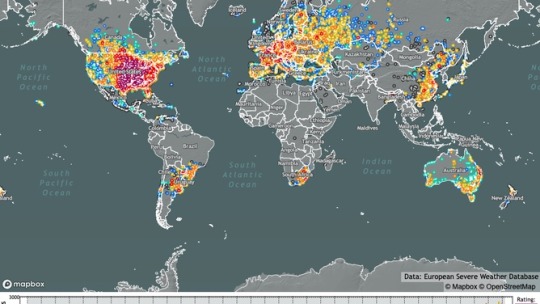#Ernst Kiesling
Explore tagged Tumblr posts
Text

Ernst Kiesling (German, 1851–1929) - Twilight - Forester's lodge in Gößweinstein
144 notes
·
View notes
Text
If you're in the path of a storm that powerful there ain't a thing you can do but pray.
This is not true. Tornadoes can be scary, and they are serious weather events, but do not be fatalistic.
Plenty of people have survived EF5 tornadoes. The two recent big ones in Moore, Oklahoma, had very small numbers of casualties. These tornadoes went straight through Moore, which is part of the major metropolitan area of Oklahoma City. Moore's population in 2020 was 62,793, so it's not a tiny place. However, the 1999 tornado only killed 36 people, and the 2013 one killed 24.
People in Oklahoma survive tornadoes because they are taught how to. The most obvious and usually easiest way to live through a tornado is to go underground. If your house has a basement, this an easy course of action. You take your blankets, pillows, shoes, and weather radio, and you just head downstairs. You keep snacks and water down there, and you have time to grab your pets and something to read. You usually have enough warning to plan accordingly.
If your residence doesn't have a basement and there's no neighborhood storm shelter, you still aren't out of luck:
Properly built, above-ground safe rooms — typically a hardened indoor closet or room reinforced with concrete and steel — are just as safe as underground shelters, says Texas Tech’s Ernst Kiesling, who’s also the executive director of the National Storm Shelter Association. In fact, above-ground safe rooms can be safer because they’re more likely to be used when severe storms move in, he says.
(from "Twister Truths: Can Nothing Survive an EF5 Tornado?")
If your indoor closet or room is not specially reinforced, you still shouldn't give up and go stand on the porch.
Doing this will keep you safe in all but the most severe circumstances:
If no underground shelter or safe room is available, go to the lowest level of a sturdy building or your home. Put as many walls between you and the outside direction of the storm as possible. Avoid windows, doors, and exterior walls. Closets and bathrooms are often good choices. — If possible, get under a sturdy table or desk. Cover up with thick items such as pillows or cushions to protect against flying debris. Put on a helmet if you have one.
(Tornado Safety Guidelines from the City of Midwest City, OK)
Tornadoes are fascinating, thrilling, and (literally) forces to be reckoned with. They certainly should be taken seriously. But please do not spread the myth that there is "no use" in trying to be safe in one. Oklahomans and the millions of other people living in other parts of Tornado Alley survive them year after year.

May 2013 photos from Flickr and Wikimedia.
Nice before-and-after photos of Moore showing the 2013 path in this BBC article.
I've been reading facts on Wikipedia again, and i'm overcome with the need to terrify non-Americans with the most underrated Terrifying American Thing: TORNADOES


Due to a quirk of mountain and ocean placement, the east-central United States has a higher number of tornadoes (particularly exceptionally strong tornadoes) than any other place on Earth.
And they're so fucking scary oh my God
30K notes
·
View notes
